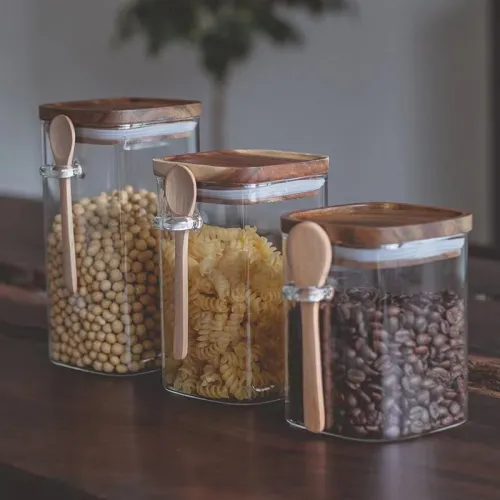 TEL: +86 311 67799298
TEL: +86 311 67799298 Email: tina@yintoglassware.com
Email: tina@yintoglassware.com
canning jars with lids
The Essential Guide to Canning Jars with Lids
Canning has become an increasingly popular method for preserving food, allowing individuals to enjoy the taste of homegrown produce long after the harvest season. At the heart of this process are the canning jars and their accompanying lids, which play a crucial role in maintaining the quality and safety of the canned goods. In this article, we will explore the types of canning jars available, the importance of lids, and best practices for successful preservation.
The Essential Guide to Canning Jars with Lids
One of the most critical aspects of canning is the lid. Canning lids typically consist of two parts a flat metal disc and a sealing compound. The flat disc is fitted onto the top of the jar, while the sealing compound creates an airtight seal during the canning process. This seal is vital as it prevents bacteria and molds from contaminating the contents, ensuring the longevity and safety of the food. It is essential to use new lids each time you can, as previously used lids may not provide a reliable seal.
canning jars with lids

The process of canning involves preparing the food, filling the jars, and sealing them. Before you begin, ensure that your jars and lids are thoroughly cleaned and sanitized. After filling the jars, leave adequate headspace to allow for expansion during heating. Next, place the lids on the jars and secure them with metal bands, but do not overtighten, as air needs to escape during the canning process.
There are two primary methods for canning water bath canning and pressure canning. Water bath canning is suitable for high-acid foods such as fruits, jams, and pickles, while pressure canning is necessary for low-acid foods like vegetables, meats, and poultry. Each method requires specific times and temperatures to ensure that all microorganisms are destroyed and that the food remains safe for consumption.
After the canning process is complete, it is essential to check the seals on the jars before storing them. A properly sealed lid will create a dimple in the center of the lid that does not pop when pressed. Store your jars in a cool, dark place, and enjoy the fruits of your labor throughout the year.
In conclusion, using canning jars with lids is a reliable and rewarding way to preserve seasonal produce. By understanding the types of jars, the importance of lids, and the proper canning techniques, anyone can become adept at this skill and enjoy the natural flavors of homemade preserves at any time of the year. Happy canning!
-
Benefits of Vacuum Containers with Pumps for Food PreservationNewsJun.12,2025
-
Glass Food Storage Container with Lid for Seal PreservationNewsJun.12,2025
-
Styling Amber Glass Plates for Modern TablescapesNewsJun.12,2025
-
Benefits of Double Wall Coffee Cups for Heat RetentionNewsJun.12,2025
-
Colored Glass Bowls in Cultural TraditionsNewsJun.12,2025
-
Durability of Colored Glass Dinnerware Compared to CeramicNewsJun.12,2025









